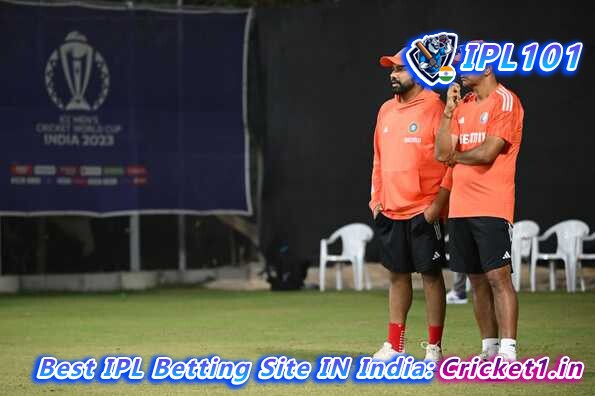
In the world of cricket, few duos represent a more stark juxtaposition in batting style than Rahul Dravid and Rohit Sharma. Dravid, revered for his patience and technical prowess, crafted innings with the precision of an artisan, emphasized by a career ODI strike rate of 71. Rohit Sharma, by comparison, radiates aggression at the crease, boasting a robust strike rate of 91, which has rocketed to nearly 125 at the current World Cup. This pairing is emblematic of the principle that opposites can attract and thrive together, merging distinct approaches to form a dynamic and successful strategic partnership.
As the coach and captain of the Indian team, Dravid and Sharma exemplify the fusion of their individual philosophies. While Sharma’s tactical inclination as a player has been to mount pressure on bowlers from the get-go, Dravid as the coach has crafted an environment allowing for this attacking brand of cricket to flourish.
It is uncertain whether the squad will hoist the coach upon their shoulders in a victorious celebration should India clinch the final at the Narendra Modi Stadium in Ahmedabad, yet Rohit Sharma rendered an unequivocal tribute to Dravid on the brink of the World Cup final stating, “What he has done for Indian cricket is massive. And he also feels that he wants to be part of this big occasion. And it’s for us to do it for him.”
In his pre-match address, the Indian skipper accentuated Dravid’s invaluable role in instilling liberty and trust within the team, underlining the importance of role clarity bestowed upon the players. Rohit articulated, “For him to agree and give me that freedom and liberty to go and play the way we want to play, that says a lot about him.”
Dravid’s wisdom and backing have been a beacon of support, especially prevalent during challenging phases. For instance, his unwavering support for Shreyas Iyer despite initial setbacks is illustrative of Dravid’s mentorship style. This enabled Iyer to establish himself in the No. 4 position—a stark contrast to the predicament in the 2019 World Cup campaign.
Adversity can often split a team apart, but what has underscored this Indian team is the solidarity and shared vision between the coach and the captain. They have orchestrated a style of play that has won admiration across the cricketing globe. “If you have decided something, we have to go and implement that,” asserted Rohit, highlighting a sense of resilience and unity within the team ranks.
Rohit also explained how Dravid’s guidance has armed players with a sense of security, allowing them to perform without the pressure of selection hanging over their heads. “Without worrying about their place in the team, without worrying about the scores that they get, and without even worrying about what happens outside. That is the most important part,” he said, reinforcing the robust team environment shaped by their combined leadership.
Reflecting on his own World Cup performance, Rohit addressed his tactical adjustments and willingness to switch gears based on the match situation. A testament to this adaptability was his strategic gameplay against England, where after a few quick wickets, he curtailed his aggressive instincts to stabilize the innings.
As India advances towards the World Cup final, the synthesis of Dravid’s meticulousness and Sharma’s bold innovation serves as the foundation of not just a potent batting lineup, but a team philosophy steeped in freedom, trust, and clarity of roles. While their batting styles remain polar opposites, their collective impact reveals a congruence in ideology—demonstrating that in the realm of cricket, fire and ice don’t just coexist, they thrive.

